How To Get Rid Of Sugar Ants Naturally
This guide will show you how to get rid of sugar ants naturally with seven of the best home remedies. Along with a full sugar ant 101.
Ants, they're icky, and you don't want them in your home, or in your car. We get it. But before you go mad with the ant killer, bear in mind that ants do help both humans and the environment alike.
Ants balance and support diverse ecosystems the world over. We might shout at them as they crawl into our peanut butter jam sandwich. But the sugar they seek helps them on their quest to spread seeds, pollinate plants and aerate the soil of your lawn.
So, if they're in your garden, maybe leave them be if they aren't causing too much upset. But, if they are destroying the tranquility of your garden or home, and you want to know how to tackle them without harsh pesticides, you're in the right place.
Pay attention, and you'll be a sugar ant subject expert in no time.
What You'll Learn
- 1 What are Sugar Ants?
- 2 Are You Sure It's Sugar Ants You're Seeing?
- 2.1 Identifying Sugar Ants – What They Look Like
- 3 Can You Kill the Entire Colony Naturally?
- 3.1 Can You Wipe Them Out, or Just the Ones You Can See?
- 4 How to Find the Sugar Ant Nest
- 5 Do Home Remedies Really Work on Sugar Ants?
- 6 7 Best Home Remedies for Sugar Ants
- 6.1 1. Borax
- 6.2 2. Diatomaceous Earth
- 6.3 3. Dawn Dish Soap
- 6.4 4. Orange Oil
- 6.5 5. Vinegar
- 6.6 6. Baking Soda
- 6.7 7. Essential Oil Spray
- 7 How to Prevent Sugar Ants Returning
- 8 Conclusion
What are Sugar Ants?
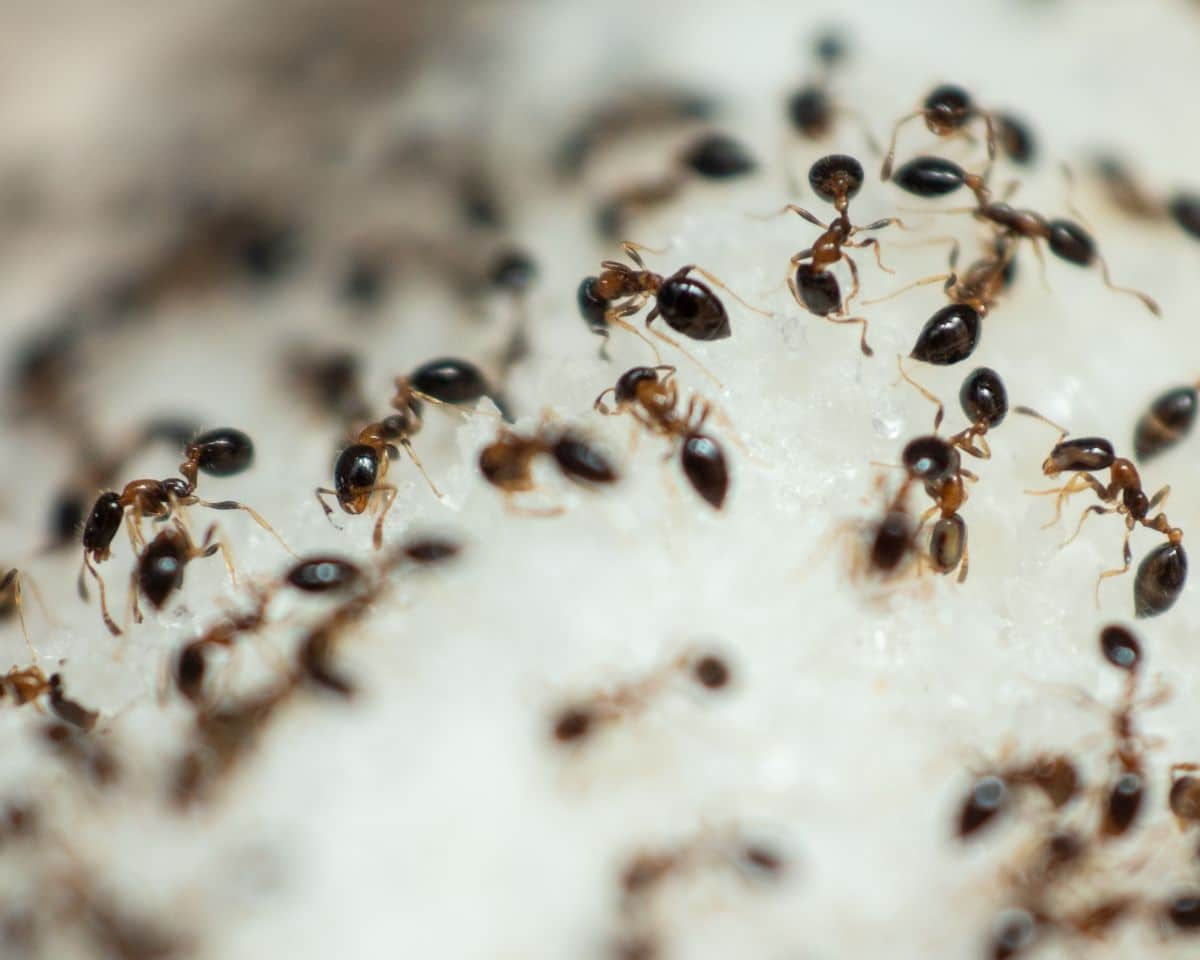
Of the 10,000 species of ant globally, there are only one specified sugar ant species. That is banded sugar ants, also known as Camponotus consobrinus. They are exclusive to Australia and not found in the United States.
For most of us, though, the generic term, 'sugar ant,' refers to many species that we encounter daily. It will likely be a pharaoh ant, an odorous house ant, or the pavement ant.
Essentially, any ants found foraging for food are usually labeled as a sugar ant because nine times out of ten, they make a beeline for sugary snacks.
So that is what is generally known as the sugar ant. But how do you identify them from more invasive and destructive species of ant such as the carpenter or fire ant?
Are You Sure It's Sugar Ants You're Seeing?
To deal with a problem, you first need to know what the problem is, so let's take a closer look.
Identifying Sugar Ants – What They Look Like
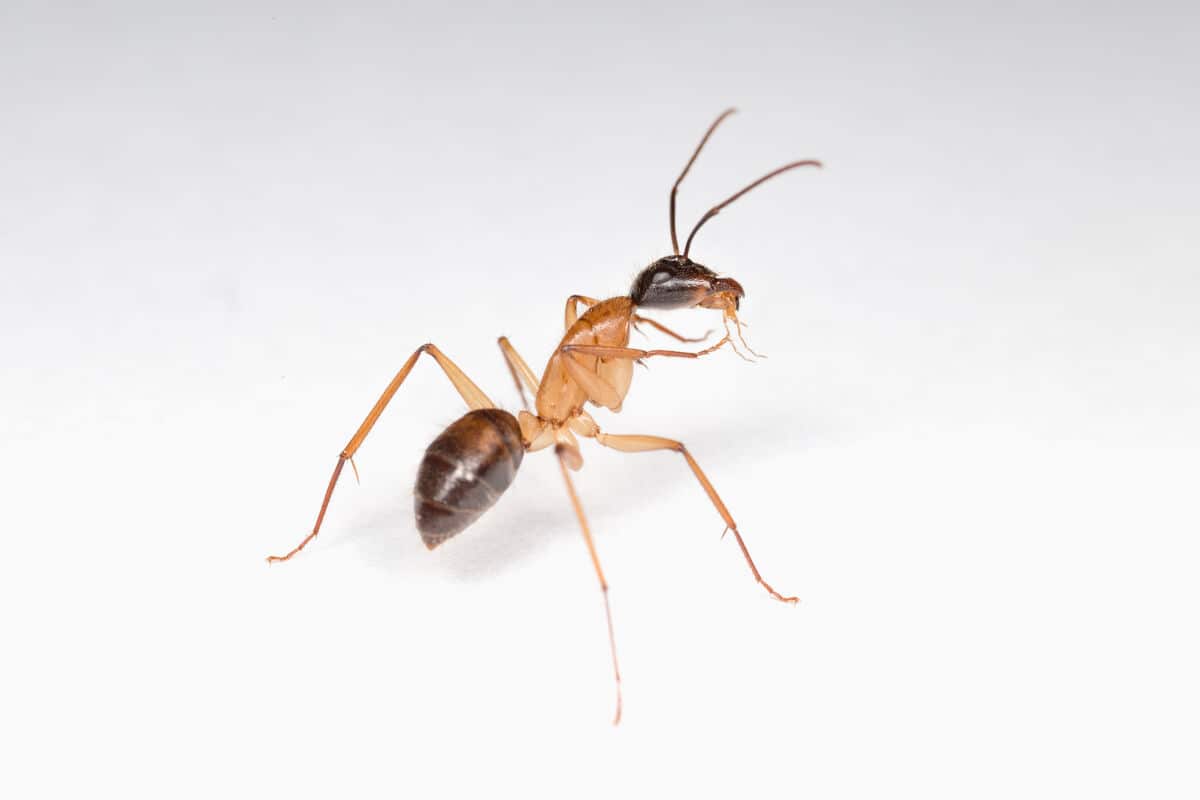
The most common types of ants labeled as sugar ants are usually the smaller types, as mentioned before. With size ranging from just 1½mm up to an average of 4mm in length, the size difference is negligible to most of us that aren't experts.
However, there are a few ways to differentiate them from the other species. The carpenter, for instance, is bigger at an average of 6 to 12mm. And they leave piles of sawdust around as it burrows in dead, damp, and decaying wood.
The fire ant is small but red and has a visible stinger on its rear end. Steer clear of them – they are called fire ants for a reason!
Attracted by sweet things, sugar ants will forage for discarded foodstuffs. With their tremendous sense of smell, they may well venture into the house because they've smelt something yummy.
Above all else, the best way to know you have sugar ants is to try offering them both a sugar snack and a protein snack to choose from, such as jelly versus peanut butter. If they favor the jelly, they are likely sugar ants.
Can You Kill the Entire Colony Naturally?
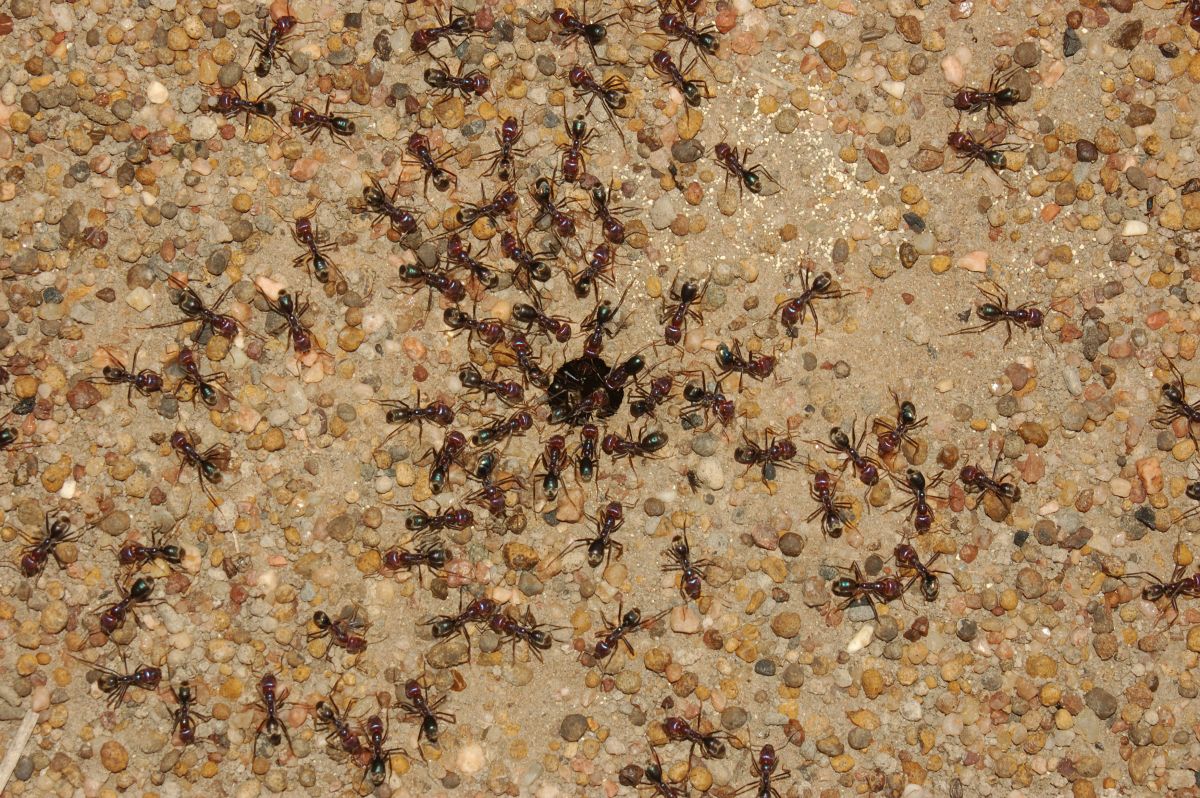
How you deal with the colony is the key to getting rid of them once and for all.
Can You Wipe Them Out, or Just the Ones You Can See?
The tried and tested way to remove ants from the home or garden uses a slow-release bait coupled with an instant kill product. This will kill the colony and eliminate the stragglers from unwanted places such as your kitchen.
The key to sorting your sugar ant problem is destroying the colony, and to do that, you have to kill the queen. So, you provide ants a tempting treat that is actually poison (known as bait). It has to be slow-acting not to kill the worker before getting it back to the settlement.
If you use a natural mineral such as borax as the bait base, it can be effective in reaching and killing the queen. That is if the ratio of borax is correct. Too strong it will kill the worker before they return, too weak, and they will eat it all without any effect on the ants.
Once the bait is set, you can turn to a natural ant killer spray, such as an orange oil mix. Orange spray will allow you to kill on contact all those foragers that are in your cupboards or all over your bathroom.
Get this bait mix and pairing correct, and you should be able to sort your problem reasonably quickly and effectively.
How to Find the Sugar Ant Nest
Most ant species like to live outside and build their colony underground in the soil. Not only is it safer for them to be out of reach, but it is also easier to excavate their lodgings. The loose soil is easier to work with compared to manmade materials found inside.
For this reason, you will most likely see sugar ants in your yard first before they enter the home. It is crucial to monitor them at this stage and see where they are traveling to and from.
Usually, you will see small volcano-like piles of dirt between cracks in paving or at the edge of lawns where the entrance to the nest is. These little piles are the soil removed from their entrance and exit tunnels.
If you miss the early warning signs of them being in the garden, you may spot them in the house first. Once inside, they will disappear under skirtings and through cracks in both internal and external walls, through power outlets, and other common holes in the house.
A little time spent monitoring their foraging routes will almost always give you a good indication of the whereabouts of the nest. You don't have to be exact, so long as you place the bait nearby, they will take it and eat it.
Do Home Remedies Really Work on Sugar Ants?
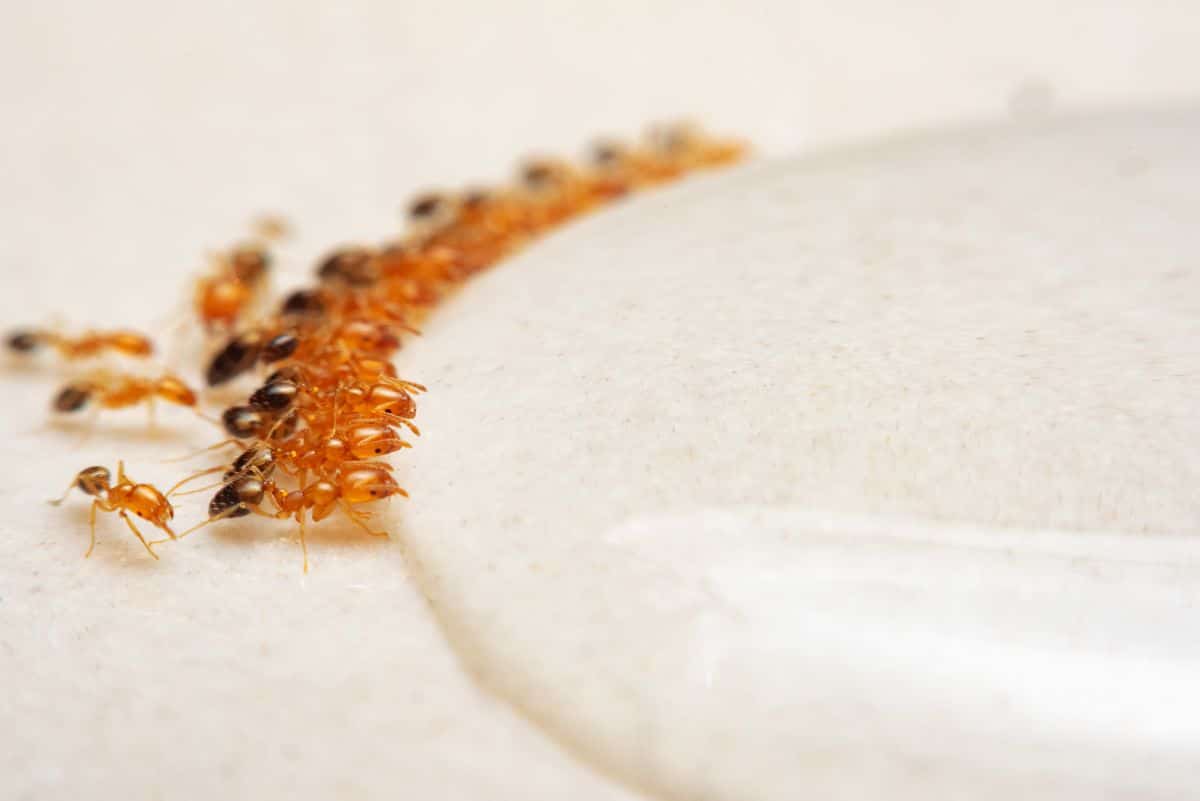
It's a given fact that man-made pesticides and insecticides are effective. They are, after all, designed to do a specific job and are created scientifically in labs to make sure they do it.
Most homemade remedies, on the other hand, are best guess trial and error ant killers. As such, they can lack the ease, speed, and results of purpose-made ant killers. But with a little research and a systematic approach, you can get good results with them.
They usually fall short when not deployed with the bait method in mind. Many are designed to repel, which will only keep the ants at bay for so long, making them incredibly ineffective. Hardier ant types such as the fire and carpenter will return quickly.
Something to note if you do use a repellant alone is that the queen of a colony can lay hundreds of eggs per day, which then hatch in less than ten days. That's thousands of ants to contend with every few weeks. So, you really need bait.
7 Best Home Remedies for Sugar Ants
1. Borax

For any bait to attract the ants, it can't smell of something inedible such as chemicals. Although not odorless, Borax can be easily masked when mixed with sugary or fatty foodstuffs.
Its technical name is sodium borate, and it is a naturally occurring mineral that is mined like any other. It is a fine white powder similar to talcum powder, so it is easily mixed with liquids and oily food.
Although no longer found in everyday household products as it once was, it is still available to buy online. Once in possession of your own small stash, you can set about making your very own ant killer.
To start, a bait must fool the ants into thinking it is food, and as ants love sugars and proteins, a mix of peanut butter and powdered sugar will bring them flocking.
An easy method for this is to take four teaspoons of borax and mix with three cups of water and a cup of sugar. Then you add two tablespoons of peanut butter to make it extra tasty and then either roll it into little balls or smear it on small pieces of bread.
The ants will carry the poisoned snacks to the colony to feed all, dramatically affecting the number of ants you see within a couple of days.
Check Price on Amazon
2. Diatomaceous Earth

Unlike other products that must be eaten to be effective, diatomaceous earth does not. It is a contact abrasive, not a poison. The upside is you don't have to mix it to make it attractive, and ants cannot build up a tolerance to it like they can with pesticides.
Diatomaceous earth is the fossilized remains of plankton-like water creatures called diatoms. They are mined in large quantities and ground up into fine sharp-edged crystals that are razor-sharp and puncture and slice the exoskeleton, causing dehydration.
Diatomaceous earth is fuss and mess-free due to its ease of application. Supplied with a puffer/duster, you sprinkle it along the ant trails for them to walk through or dust it into cracks and the entrance to the nest.
Known to be effective against all types of ants, it is usually effective in two to three days in reducing visible numbers. It can also be carried back to the colony on the workers' bodies, where the queen will come into contact with it and die.
Check Price on Amazon
3. Dawn Dish Soap

Dawn dish soap is another one of those home remedies with a proven track record of fighting bugs. It can be applied directly to insects undiluted and mixed with other ingredients to create an ant killing spray.
It acts in two different ways. Firstly the same ingredients that degrease dishes also break down an ants' exoskeleton, removing the lipids that give it a protective coating.
By breaking these down, it allows the evaporation of moisture, causing dehydration, which is fatal. It also has surfactants, which change the viscosity of water, meaning ants can no longer float in it, so they drown.
To make a batch of easy to use ant killer spray, mix two cups of water, three tablespoons of blue Dawn dishwashing liquid, and three tablespoons of table salt. Use it to spray ants directly, the colony's entry points, and all visible cracks and crevices they pass through.
Check Price on Amazon
4. Orange Oil

Orange oil made its name as an ant killer when consumers discovered that citrus-flavored hand soap killed fire ant mounds. Many products are now designed using this natural method as the basis for their ant killer.
Concentrated orange oil has d-limonene in it, which is proven to kill on contact for many insect types, including ants. Plus, it's also useful as a repellent due to its strong smell, while making your home smell great.
The active ingredient d-Limonene breaks down the wax coating on the ant's respiratory system, causing suffocation.
Orange oil is available as ready-mixed products or, like many essential oils, as a small bottle of concentrate. As a water-based solution, it is excellent as a direct-spray ant killer, as well as a repellent that can be sprayed as a preventative method.
To make your own, simply get yourself some orange oil and mix one and a half ounces of it with a gallon of water. You can add three ounces of Dawn dish soap for added effectiveness. This mix can be used as a spray or a mound drench for lawn applications.
Check Price on Amazon
5. Vinegar

Vinegar, although it sounds simplistic, has its place as an ant deterrent. It is not an ant killer applied straight. But it is an easy to use spray that will repel ants by overwhelming their scent receptors.
The acidic smell wreaks havoc with their ability to read communication signals such as the pheromone trails left by other workers that lead them to food. They will avoid the smell and go foraging in the opposite direction where the air is clearer.
There is no mixing of the solutions required. Vinegar can be applied directly or simply diluted with water to make it easier to spray in all the areas needed, such as the cracks and crevices that they enter through.
Once the ants are sent packing to look for food elsewhere, you can get to grips with killing the nest if there is one nearby. For that, natural bait or ant killer is required.
Our borax mix above is perfect for this follow-up stage.
Check Price on Amazon
6. Baking Soda

Baking soda is excellent for a good bake or cleaning tough stains on clothing. And now it can be your go-to weapon in the fight against unwanted guests.
Baking powder is the natural chemical, sodium bicarbonate. A salt made up of a sodium cation and a bicarbonate anion. It is naturally crystalline in form but usually produced and sold as a fine powder.
When mixed into a bait with a sweet attractant such as sugar, it is the deadly ingredient that kills the workers who eat it and the queen they feed it to.
Once eaten, the baking soda will react violently with the digestive acids found in the ant's stomach. As it fizzes, it releases carbon dioxide in large volumes, filling the stomach and expanding it until it bursts and kills the ant.
To make a baking soda ant bait, you mix equal parts sugar and baking soda. The ants will eat the mixture and collect it in small batches to carry back to the colony and queen.
Check Price on Amazon
7. Essential Oil Spray
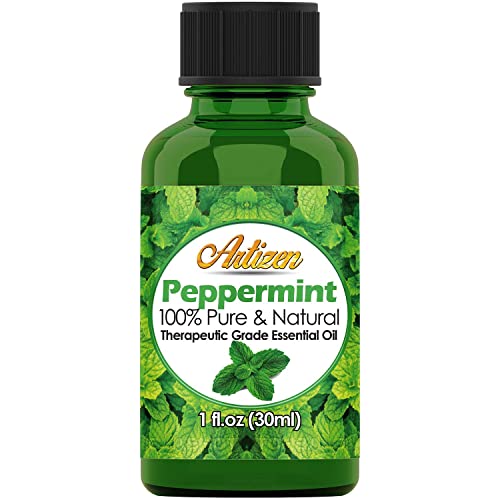
Essential oils have long been a proven repellant for keeping most ant species at bay. Known for their homeopathic applications, they are already popular in most homes. But few are aware of their effectiveness as an ant repellent.
Essential oils have intense aromas that interfere with the scent receptors in the same way vinegar does. This prevents them from picking up the pheromone trails left by other workers.
Essential oils with proven effectiveness are lemon oil, peppermint oil, clove oil, and tea tree oil. Like orange oil, Lemon oil has d-limonene, which is toxic to sugar ants.
You can keep it simple by dripping the oils on cotton wool balls and dotting them around your property near the entry points you have seen the ants use.
If you want to take the fight to the ants rather than wait for them to avoid the cotton balls, you can make up your own DIY essential oil mix.
Mix a cup of boiling water with ½ teaspoon liquid dish detergent, three to five drops of lemon oil, peppermint oil, and tea tree oil, and pour into a spray bottle.
Then find the ants and spray them directly as well their travel routes to send them running.
Check Price on Amazon
How to Prevent Sugar Ants Returning
Firstly, all ants are foragers, and they love discarded food remains, such as crumbs and garbage. And if it's sweet, there'll be a sugar ant not too far. They also love to look for water sources that will sustain their colonies. As such, any bathrooms or kitchens with leaks or damp will be perfect for them.
If you remove the easy options in your own home and yard, it will become less attractive for them, and they will go looking elsewhere for it.
Also, be sure to wipe away spilled food and sugary drinks from indoors and wash up plates with food debris on.
In the house, you can also take extra measures to ward off sugar ants:
- Always store sweet food in tightly sealed containers so that the sugary smell cannot entice ants to come looking for it.
- Clean your sink, plughole, and U-bend with an odor remover to stop it smelling like a buffet for ants. The mix of rotten food bits along with water means the waste pipes linked to your sink will be a superhighway to your home when they smell it.
- Seal cracks and crevices in walls, doors, and pipework to remove the entry exits holes the ants are using. Use industrial fillers where appropriate or cotton wool covered in essential oils where ventilation is still required.
When you take preventative measures like these, you make it much easier to stop an infestation in the first instance and keep ants away if you have just got rid of them.
Conclusion
There you have it. It is possible to treat your ant problem with an all-natural approach. You just need the knowledge and a plan to make it effective. And as we mentioned at the start of this piece, you may wish to take a non-lethal approach if you want to keep the ecosystems in your garden healthy.
Remember, though, that the key to removing the worst infestations is bait. You must ensure you give yourself a fighting chance of killing the queen if you want to get rid of the colony and your problem in full.
Have you had success with natural remedies? Do you have a tried and tested method that we haven't covered? Leave it in the comments for us and our readers to peruse, and we'll let you know how we get on.
How To Get Rid Of Sugar Ants Naturally
Source: https://www.gopests.com/how-to-get-rid-of-sugar-ants-naturally-7-natural-remedies/
Posted by: toddphrebre98.blogspot.com

0 Response to "How To Get Rid Of Sugar Ants Naturally"
Post a Comment